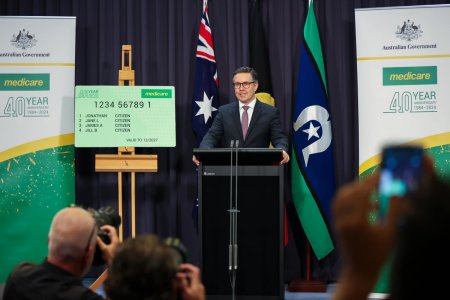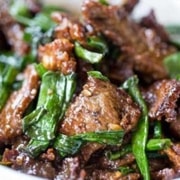'Game-changing' Medicare update brings $15M in bulk-bill savings
In a move that has been hailed as a 'game-changer', the Australian government has tripled a Medicare bulk-billing incentive, resulting in an estimated $15 million in savings for Australians seeking healthcare.
This significant increase in the bulk-billing rate is part of a $3.5 billion incentive program that was rolled out in November.
The program has already seen a 2.1 per cent increase in general practitioner (GP) bulk-billing, equating to around 360,000 appointments, according to the latest data from the Department of Health.
It is a cost-of-living measure that triples the amount of money given to doctors who choose not to pass on out-of-pocket expenses, or 'gap fees', to children under 16, pensioners, and concession card holders.

This means that approximately 11.6 million vulnerable Australians are eligible for these savings.
Health Minister Mark Butler expressed his satisfaction with the program's early success, stating, 'The Albanese government committed to making it easier for people to see a bulk-billing doctor and the first two months of data show that is exactly what is happening right around the country, particularly in rural and regional areas.'
‘I hope this is the beginning of a real turnaround in bulk-billing behaviour,’ the minister added.
The most significant increase in bulk billing was seen in Tasmania, with a 5.7 per cent rise, followed by South Australia (3.8 per cent), Western Australia (2.4 per cent), and Queensland (2.2 per cent).
The incentive program was introduced in response to a concerning drop in bulk-billing numbers, which had fallen to 80.2 per cent in the last financial year—the lowest in a decade.
This decline sparked fears that Australians, already grappling with rising costs, were missing out on essential healthcare.
A report from the Productivity Commission released on 1 February shows that patients are postponing visits to the GP due to the cost of appointments, even though more clinics are offering bulk billing.
The number of people avoiding the doctor due to cost doubled from 7 per cent in 2022 to 2023, compared to 3.5 per cent the previous year.
The incentive to GPs under the current program varies depending on their location.
For a standard consultation, the incentive increased from $6.85 to $20.65, while remote doctors have seen a rise from $13.15 to $39.65.
In addition to that, the MyMedicare program was launched in October to help patients access longer telehealth calls under the Medicare Benefits Scheme.
To be eligible, patients must register with participating GPs and have had at least two face-to-face appointments in the past two years.
This comes after the government’s proposal to increase the low-income threshold the 2 per cent Medicare levy applies at, potentially saving eligible Australians up to $172.
In celebration of this milestone, a commemorative Medicare card will be rolled out starting in February. If you get a new or replacement card between 1 February and 31 December, it will have a different look.

What are your thoughts on this 'game-changing' Medicare update? Have you benefited from the increased bulk-billing incentive? Share your experiences in the comments below.
This significant increase in the bulk-billing rate is part of a $3.5 billion incentive program that was rolled out in November.
The program has already seen a 2.1 per cent increase in general practitioner (GP) bulk-billing, equating to around 360,000 appointments, according to the latest data from the Department of Health.
It is a cost-of-living measure that triples the amount of money given to doctors who choose not to pass on out-of-pocket expenses, or 'gap fees', to children under 16, pensioners, and concession card holders.

Medicare's bulk-billing incentive has saved $15 million for Australians. Source: Mark Butler MP/Facebook
This means that approximately 11.6 million vulnerable Australians are eligible for these savings.
Health Minister Mark Butler expressed his satisfaction with the program's early success, stating, 'The Albanese government committed to making it easier for people to see a bulk-billing doctor and the first two months of data show that is exactly what is happening right around the country, particularly in rural and regional areas.'
‘I hope this is the beginning of a real turnaround in bulk-billing behaviour,’ the minister added.
The most significant increase in bulk billing was seen in Tasmania, with a 5.7 per cent rise, followed by South Australia (3.8 per cent), Western Australia (2.4 per cent), and Queensland (2.2 per cent).
The incentive program was introduced in response to a concerning drop in bulk-billing numbers, which had fallen to 80.2 per cent in the last financial year—the lowest in a decade.
This decline sparked fears that Australians, already grappling with rising costs, were missing out on essential healthcare.
A report from the Productivity Commission released on 1 February shows that patients are postponing visits to the GP due to the cost of appointments, even though more clinics are offering bulk billing.
The number of people avoiding the doctor due to cost doubled from 7 per cent in 2022 to 2023, compared to 3.5 per cent the previous year.
The incentive to GPs under the current program varies depending on their location.
For a standard consultation, the incentive increased from $6.85 to $20.65, while remote doctors have seen a rise from $13.15 to $39.65.
In addition to that, the MyMedicare program was launched in October to help patients access longer telehealth calls under the Medicare Benefits Scheme.
To be eligible, patients must register with participating GPs and have had at least two face-to-face appointments in the past two years.
This comes after the government’s proposal to increase the low-income threshold the 2 per cent Medicare levy applies at, potentially saving eligible Australians up to $172.
In celebration of this milestone, a commemorative Medicare card will be rolled out starting in February. If you get a new or replacement card between 1 February and 31 December, it will have a different look.
Key Takeaways
- Australians have saved approximately $15 million in out-of-pocket medical expenses due to a Medicare bulk-billing incentive.
- The federal government's 'game-changing' $3.5 billion incentive programme has resulted in an increase in GPs bulk-billing, particularly benefiting children under 16, pensioners, and concession card holders.
- Following the implementation of new incentives, bulk-billing rates have noticeably increased in several states, with Tasmania having the highest rates.
- The government is also proposing to increase the low-income threshold for the 2 per cent Medicare levy, which could save eligible Australians up to $172, and a commemorative Medicare card is being introduced.
What are your thoughts on this 'game-changing' Medicare update? Have you benefited from the increased bulk-billing incentive? Share your experiences in the comments below.







